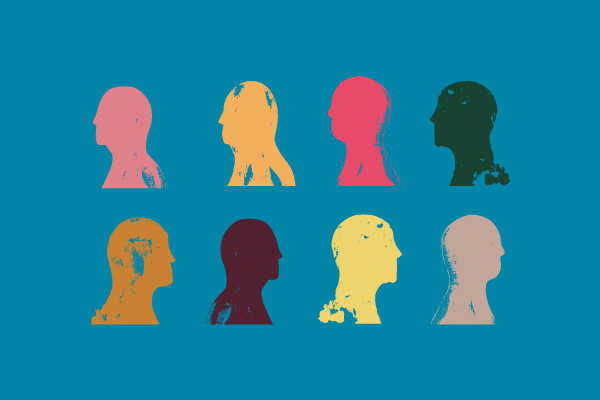Hired, Fired, or Stopped by Police: The Discriminatory Stew of Intersectionality and Stereotypes

Why are Black men disproportionately stopped by police? Why are White men 3 times more likely to become CEOs than Black women? In both cases, the intersecting roles of gender and race combine in unique ways to feed into simple stereotypes that can contribute to complex patterns of discrimination. A key factor, according to a study published recently in Psychological Science, involves threshold models of behavior, in which a certain threshold for “evidence” (called a “critical value”) is used to make a decision and thus can be used to predict certain behavioral outcomes.
“Intersectionality has deeply contributed to our understanding of discrimination, helping us understand how and why certain groups are disproportionately mistreated.”
Neil Hester (McGill University) and colleagues
“The term ‘intersectional stereotypes’ refers to the overlap of multiple social identities that may combine in unique ways to contribute to discrimination,” wrote Neil Hester (McGill University), Keith Payne (University of North Carolina at Chapel Hill), Jazmin Brown-Iannuzzi (University of Virginia), and Kurt Gray (University of North Carolina at Chapel Hill). “The stereotype of criminality, for example, may be applied to Black men more strongly than can be explained by the additive effects of race and gender stereotypes…. We suggest that complex (i.e., multiplicative) patterns of discrimination can in principle result from simple (i.e., additive) stereotypes that combine with simple decision rules—for example, ‘if someone has a threat level of X or higher, that person will be stopped by police.’”
The authors draw on classic work describing how decision criteria and population distributions combine to explain behavioral outcomes. They note that threshold models explain why, for example, two people can have similar levels of perceived competence, yet one is promoted and the other is not. The models also explain how two people with very different levels of the same trait can experience the same outcome.
“By comparing how the same critical value impacts outcomes for different populations (e.g., women vs. men), threshold models describe one way in which group differences in perceived traits (whether actual or stereotypical) translate to discrimination,” the authors note. “Importantly, the pattern of discrimination that emerges from group-mean differences depends on the critical value.”
In three statistical simulations, the authors showed how simple stereotypes can explain gender-by-race discrimination in promotions and police stops. They also explored race-by-age discrimination in police stops, noting higher relative racial disparities among 12-year-olds than among 20-year-olds.
- Gender disparities along the corporate ladder. A 2019 survey of more than 1.8 million corporate employees found that 65% of White men were promoted to manager, director, executive, or a higher position, compared to 43% of Black women. The authors hypothesized that five variables could predict those outcomes: an overall gender difference for perceived competence, an overall race difference for perceived competence, and separate critical values for promotion to manager, director, and executive.
- Race-by-gender disparities in New York Police Department (NYPD) stops. Seven years of NYPD stop-and-frisk data showed that 78.4% of stops involved Black men despite only 36% of the New York City population being Black. The authors hypothesized that three variables could account for whether someone was stopped: a main effect of race, a main effect of gender, and a critical value for the level of perceived threat at which the average police officer stops an individual.
- Race-by-age disparities in NYPD police stops. The same NYPD stop-and-frisk data also showed that over 7 years, police stopped 5.6 Black 20-year-olds for every White 20-year-old and 10.9 Black 12-year-olds for every White 12-year-old. The authors hypothesized that the following values could predict whether someone was stopped: a main effect of race on perceived threat, main effects of age on perceived threat (increasingly large effects as age increases, with separate age effects estimated for ages 12 through 20), and a single critical value at which someone is perceived as threatening enough by the average police officer to be stopped.
“Intersectionality has deeply contributed to our understanding of discrimination, helping us understand how and why certain groups are disproportionately mistreated,” the authors concluded. “However, intersectional discrimination need not arise from intersectional stereotypes. In some cases, simple stereotypes can give rise to nuanced patterns of discrimination that appear more cognitively complex than they actually are. We hope this insight will guide future work on how stereotypes influence who is hired, fired, and stopped by police, as well as other outcomes that shape people’s lives.”
Reference
Hester, N., Payne, K., Brown-Iannuzzi, J., & Gray, K. (2020). On intersectionality: How complex patterns of discrimination can emerge from simple stereotypes. Psychological Science, 31(8), 1013–1024. https://doi.org/10.1177/0956797620929979




